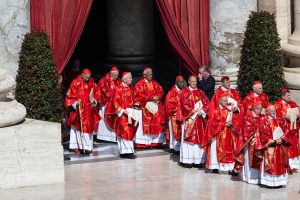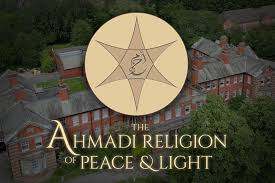By Chris Allen
Defining the concept of Islamophobia has proven to be tricky in the two decades or more since the term was first used. A recent parliamentary group published their own definition, but it has not yet attracted broad consensus.
What are the competing definitions of Islamophobia?
The term Islamophobia was first used by the Runnymede Trust in 1997, identifying discrimination, abuse, and social and structural disadvantage directed towards Muslims.
In 2017, the trust published a report considering the past two decades, and proposed a definition of Islamophobia as:
“Any distinction, exclusion, or restriction towards, or preference against, Muslims (or those perceived to be Muslims) that has the purpose or effect of nullifying or impairing the recognition, enjoyment or exercise, on an equal footing, of human rights and fundamental freedoms in the political, economic, social, cultural or any other field of public life”
Twenty years on from its ground-breaking report, Islamophobia: A Challenge for Us All, the Runnymede Trust recently also proposed the succinct “Islamophobia is anti-Muslim racism.” Despite this, none has to date been adopted within the political and policy spaces.
The University of Berkeley in California also proposed a definition:
“Islamophobia is a contrived fear or prejudice fomented by the existing Eurocentric and Orientalist global power structure. It is directed at a perceived or real Muslim threat through the maintenance and extension of existing disparities in economic, political, social and cultural relations, while rationalising the necessity to deploy violence as a tool to achieve “civilisation rehab” of the target communities (Muslim or otherwise). Islamophobia reintroduces and reaffirms a global racial structure through which resource distribution disparities are maintained and extended.”
The Council of Europe also has a definition:
“The fear of or prejudiced viewpoint towards Islam, Muslims and matters pertaining to them . . . [including] daily forms of racism and discrimination or more violent forms”
As does the UN Special Rapporteur on contemporary forms of racism, racial discrimination, xenophobia and related intolerance:
“A baseless hostility and fear vis-à-vis Islam, and as a result, a fear of and aversion towards all Muslims or the majority of them. [Islamophobia] also refers to the practical consequences of this hostility in terms of discrimination, prejudices, and unequal treatment of which Muslims . . . are victims and their exclusion from major political and social spheres.”
Since entering the public and political spaces little more than two decades ago, Islamophobia has been routinely contested. Responding to this, the All-Party Parliamentary Group (APPG) on British Muslims recently undertook a two-year inquiry that sought to give meaning to the word and nature of the phenomenon.
Engaging parliamentarians, experts, lawyers, community activists and Muslim organisations, the outcome was a proposed working definition of Islamophobia. In its 2018 report, Islamophobia was established as being
“rooted in racism and is a type of racism that targets expressions of Muslimness or perceived Muslimness.”
As well as sending out a positive message to Britain’s Muslim communities that Islamophobia was being taken seriously, the report stated that its intention that the working definition would be adopted by the British government, statutory agencies, civil society organisations and British Muslims.
Despite being endorsed by more than 60 academics and being adopted by the Labour Party, Liberal Democrats and Plaid Cymru, recent reports suggest the government is unlikely to follow suit. According to a government spokesman, the working definition has “not been broadly accepted” and so “further careful consideration” was required.
Why do we need a definition?
The APPG report says the lack of a working definition has resulted in Islamophobia not being taken seriously and, in consequence, overlooked in policy initiatives, including the government’s hate crime action plan.
The APPG report suggests that given that the government had adopted a working definition of antisemitism, not all forms of discrimination were being responded to proportionally.
While the working definition of antisemitism proposed by the International Holocaust Remembrance Alliance has been adopted by a number of different governments and state institutions around the world, it seems that the APPG was looking to achieve similar with its working definition. There are a number of arguments, however, why this was unlikely.
Why was the APPG’s definition rejected?
On one level, the government’s decision to reject the working definition was unsurprising. As the APPG’s 2018 report notes, when asked whether the time was right for a legal definition of Islamophobia to be adopted in the UK, Victoria Atkins MP, parliamentary under-secretary of state for crime, safeguarding and vulnerability, said the government did not recognise the need for a definitive definition. The government felt there was a lack of consensus.
The government’s rejection may also have been shaped by the concerns of others, including the National Police Chiefs Council. Martin Hewitt, who chairs the council, said the working definition was too broad and had the potential to cause confusion among officers enforcing it and that it could be used to limit free speech on some historical or theological issues. He also claimed the working definition might undermine counter-terrorism powers.
Similar concerns were expressed by a group of prominent Christians, atheists, Sikhs and others including the evolutionary biologist Professor Richard Dawkins, the former Bishop of Rochester Michael Nazir-Ali, the human rights campaigner Peter Tatchell, and historian Tom Holland, who wrote an open letter to the home secretary, Sajid Javid.
The group argued that because the definition was vague, it had the potential to damage free speech, academic and journalistic freedom, and social cohesion. It went on to claim that adopting the working definition would effectively create a “backdoor blasphemy law”.
Such criticisms have been used regularly by critics, many of whom have said that claims of Islamophobia – irrespective of how it is defined – limit free speech and provide a shield behind which Muslims deflect criticism of themselves and their religion. Those doing so include the journalist Melanie Phillips and the Quilliam Foundation.
While important to acknowledge that Islamophobia should not be used to limit or censure appropriate, legitimate or proportionate criticism, the claims regularly put forward by some critics appear to be mere themes for which little evidence appears to exist.
Stating that Islamophobia is “rooted in racism and is a type of racism” has also created confusion, not least in the conflation of religion with race. While religion is seen to be something that can be changed and chosen, we typically see race as being fixed and unchanging.
In this respect it is important to stress that the comparison with racism is intended to highlight the similarities that exist between the function and manifestation of racism and Islamophobia as opposed to suggesting that Muslims constitute a “race”. In this way, the working definition emphasises how Islamophobia targets markers of “Muslimness” (symbols of Muslim identity) in the same way that racism targets people for the colour of their skin.
What next?
To what extent the APPG and others continue to push for its working definition of Islamophobia to be adopted by government is unclear at present. Nonetheless, one likely consequence of not adopting it is that Islamophobia will continue to be contested. While so, there are no guarantees that adopting a definition – the APPG’s or any other – will appease or placate those who seek to criticise, detract from, or deny Islamophobia.
In this respect, any working definition is unlikely to provide the “solution” to the “problem” that many are hoping it will. Critics and detractors may also seek to use the absence of a definition as “evidence” that Islamophobia does not exist. This must be robustly countered, not least because it is a hollow argument.
While the current impasse looks unlikely to be resolved in the near future, it is worth noting that there is some value in being able to meaningfully yet straightforwardly convey to a non-specialist audience what Islamophobia may or may not be. As with all discriminatory phenomena, however, there will be some change and transformation over time and so any definition that is either proposed or subsequently adopted cannot be seen to be fixed or static.
Chris Allen is an associate professor at the Centre for Hate Studies, University of Leicester




















